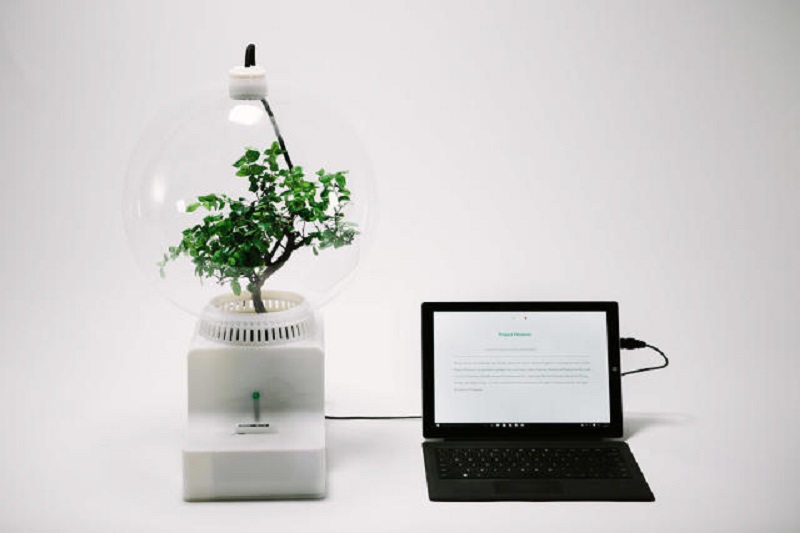Hi, tree: Microsoft supported Florence project is trying to establish a conversation with plants

The idea of Project Florence under the leadership of Helen Steiner [Helene Steiner] is half science, half - art project. Her system transmits messages to the plant with a series of light pulses, and then builds the answer in a natural language, taking into account chemical reactions and the general condition of the plant.
Messages typed by a user on a computer are disassembled by a semantic analyzer and turn into pulses of light emitted by LEDs located around the plant. For example, messages of a positive nature can be converted to long pulses of red LEDs, since red light stimulates the flowering of plants.
')
The tree reacts to light pulses by certain chemical reactions that occur in the leaves and roots. Sensors on leaves, roots and in soil analyze the condition of the plant and the soil around it, forming a meaningful response in text form based on the analysis. Perhaps in the not-so-distant future, the gardener or farmer will be able to ask the plant “how are you” and get an answer.
“We can practically determine the mood of a plant and give an answer based on it,” says Steiner. “When I ask you a question, and you are in a good mood, your answer will be better than if you were tired.” Therefore, we decided that working with natural language would be a good way to demonstrate the state of weed. ”
Asta Roseway from the Microsoft Research Advanced Development Department, Asta Roseway, explains that this project is at the crossroads of several disciplines, and biologists, engineers, and programmers are working on it together. The development of the project may open up new opportunities in farming, and in particular in the cultivation of food in urban environments.
In addition to conversations with plants, Microsoft is actively developing in the areas of hydroponics and aquaponic - trial farms will be built on the company's campus this summer.
Hydroponics involves the cultivation of plants in artificial conditions without soil. Aquaponica is the creation of a complex artificial ecosystem where plants, fish and bacteria live in symbiosis, and the plants are grown without soil. Fish provide food for plants, and they in turn purify water for the comfortable existence of fish.
“It seems to me that there are so many aspects in which such projects can unfold,” says Steiner. “You need to build more robust agricultural systems, but when you start thinking about responsive habitats, you get unexpected aspects. You can seriously think about bringing the natural environment into our technological world, instead of trying to shove technology into the environment. ”
Cultivation of plants in urban environments is a trendy line of research in modern science. After all, agriculture is the largest consumer of fresh water: for example, in the USA, farmers use up to 80% of all water consumed by residents.
In parts of the world where there are shortages of water, or in large crowded cities, where fresh greens have to be delivered from afar, the idea of saving water, coupled with growing greens "on the spot", will certainly receive support.
Cultivation of plants is supposed to be carried out in such places as cellars , garages or directly in kitchens . For example, under the streets of London are old bomb shelters built during the Second World War. Today, long underground tunnels are misused: they have become hydroponic greenhouses. Environmentally friendly product freshly supplied in the morning to the shops, restaurants and canteens of London.
Source: https://habr.com/ru/post/369277/
All Articles